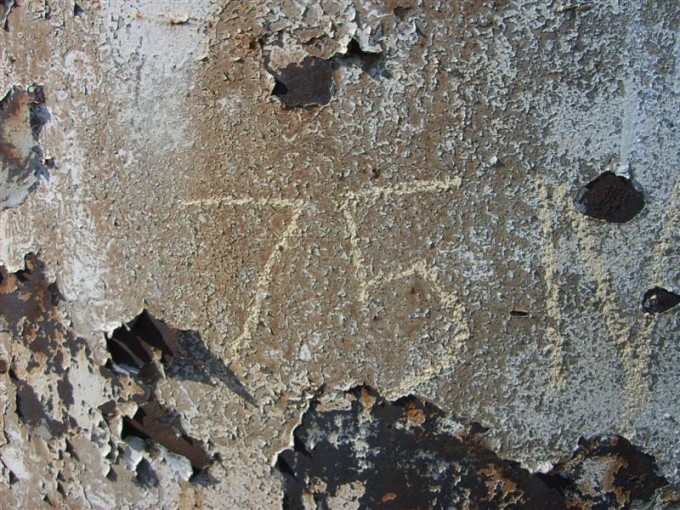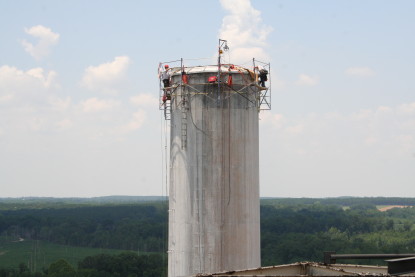What Causes an Industrial Chimney to Deteriorate?

Deterioration on the Exterior of a Concrete Industrial Chimney
The smokestack & venting system of an industrial facility is much more complex than most people think. Factory owners & managers generally understand the importance of regular plant maintenance, but industrial chimneys often don’t get serviced as often as they should. Due to their height, construction, and function, industrial chimneys will inevitably face deterioration. With proper (and regular) maintenance, these structures can serve for years beyond their intended life span of 25 to 30 years.
Industrial chimneys & smokestacks will begin to deteriorate as soon as they are constructed. After a few years of regular use, the deterioration of these structures is exponential. Early on, deterioration is hard to detect, especially from outside of the structure. In subsequent years, deterioration accelerates rapidly often turning minor maintenance requirements into major repairs. A specialized industrial chimney technician can detect early signs of degradation and find a solution before it becomes a major or dangerous issue.
There are five major types of deterioration: flue gases, liner deterioration, carbonation, weather, and construction techniques.
Flue Gases
Corrosive chemicals and combustion byproducts will attack the concrete & materials the stack is constructed of. These flue gases can bleed into the annular space between the chimney liner and the shell causing corrosion-induced cracks, delamination, or spalling.
Liner Deterioration
Industrial chimney liners & coatings protect and insulate the structure. Metal liners have either an interior acid-resistant coating or exterior insulation. If the acid-resistant coating fails or the insulation becomes damaged, holes or cracks can develop in the liner, making the chimney shell vulnerable to chemical and thermal threats. This can cause concrete industrial chimneys to crack or spall.
Carbonation
Although carbonation is not a major threat early in the life of an industrial chimney, it can pose serious problems close to the end life of the structure. When concrete is exposed to carbon dioxide continuously, the pH of the material declines, reducing the protection of the steel rebar inside of the structure. After two decades of use, as much as 1.5 inches of concrete will have been carbonated which is troublesome as reinforcing steel is embedded 1.5 inches inside of the concrete. When this steel rusts, it expands 12 – 14 times its original size, causing the outer concrete to spall & break off.
Weather
Weather actually plays a very critical role in the deterioration of industrial chimneys. Wind, rain, fluctuating ambient temperatures, lightning, freeze-thaw cycles, and other environmental factors can hasten the deterioration of these tall structures.
 Construction Techniques
Construction Techniques
The materials & techniques used to construct a smokestack can also affect how quickly a structure deteriorates. Many industrial chimneys over 200 ft are built in 7 to 10 foot sections and the joints can wear out way before the other components of the structure, allowing corrosive elements to attack these now-vulnerable parts. Steel stacks also suffer from small cracks caused by wind loading or thermal stress during construction.
If you’d like to learn more about creating a regular plant maintenance program, contact our Rope Access Chimney Specialists today. We offer a wide range of maintenance and repair services that are quick, affordable, and effective. Our goal is to prevent extensive repair projects by spotting early signs of deterioration & vulnerabilities. Find out why facilities all across the world turn to Industrial Access for plant maintenance & repairs.



